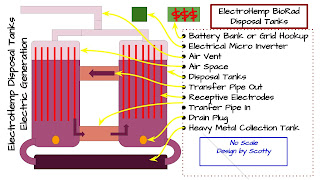EPA Scientist Ms Cristina Negri shares information about #Phytoremediation which is using plants to cleanup mankind's pollution. Although this video is talking about Trees. There are other plants that can do the same thing that don't have to wait for a tree to grow-such as a fast growing #IndustrialHemp.
One advantage a tree does have is the roots will go deeper than the roots of a Hemp plant that go 6 feet deep.
In a nutshell different plants cycle the toxins differently. I feel it is best to utilize a few types of plants to accomplish the cleanup activities needed. One of the discoveries the #ElectroHemp BioRad Phytotechnology advancements the Team ( David Wechsler, Kimberly Kowalski, and myself) have discovered is that by growing plants in a Greenhouse will enable a wider variety of plant species to be grown "All Year Long" in addition to eliminating the chance of the toxic plant material from entering the food chain, being eaten by an animal, and inadvertent human contact.
The ElectioHemp BioRad Hazardouse Waste digesters and disposal system (see other posts) is how the plant material is disposed and turned into NON TOXIC plant matter that does not require long term storage of the hazardous materials.
If you have any questions or comments about the system and process let us know and we will be happy to answer your questions.
Scotty
Thank You for stopping by the Green Blog. If additional information in needed or you have a question let me know by posting a question or comment. Together we can make a difference and create a future that will benefit everyone.










